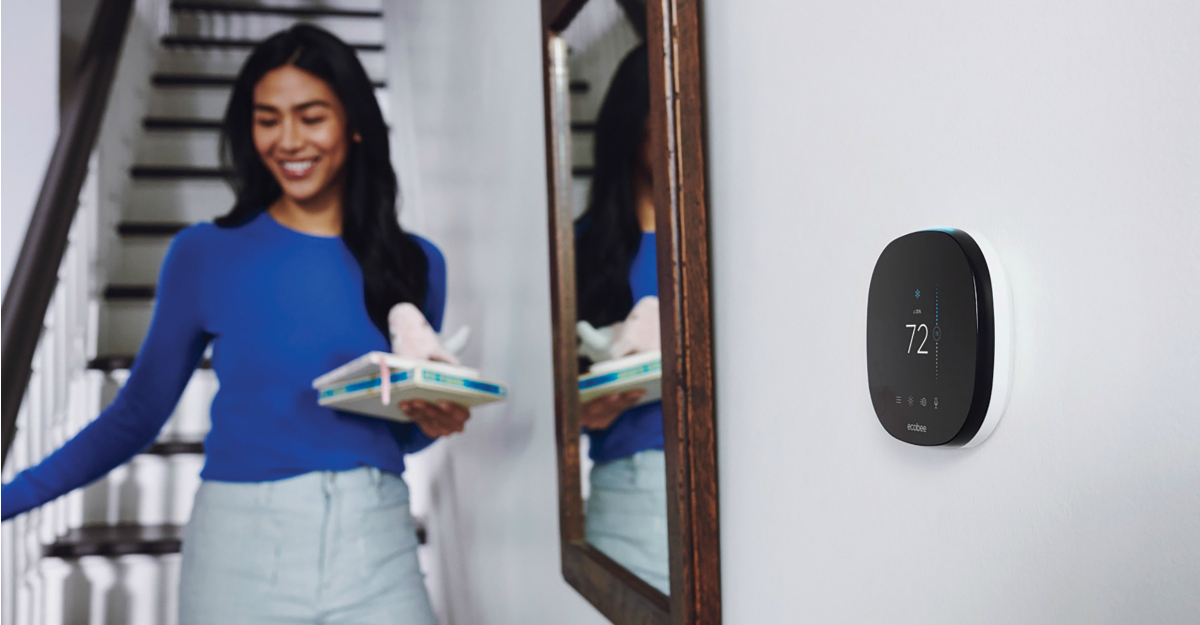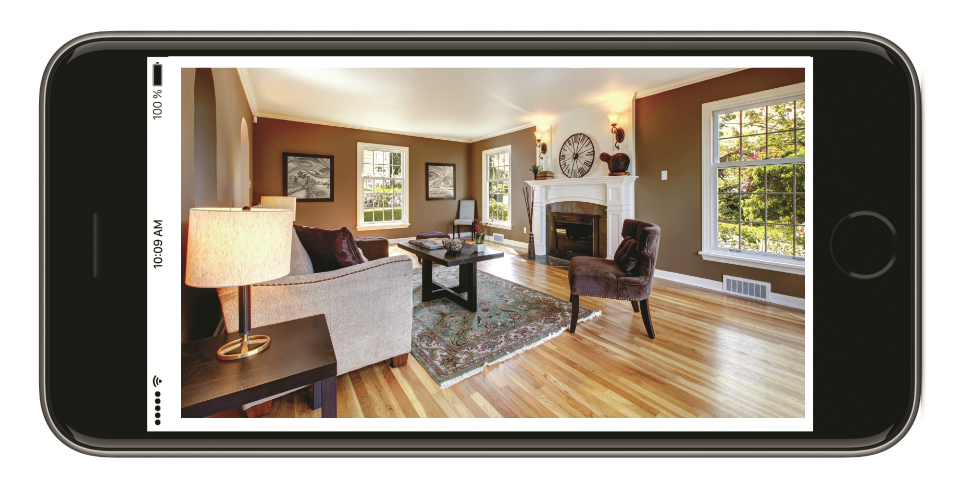By Deanna Kane
It’s likely at least one aspect of your home is automated—a convenience that makes the chaos of daily life a little easier. But unless you are fully immersed in the world of technology, automating an entire home can be overwhelming. As home automation becomes the norm, home design professionals are becoming as well-versed in home technology as they are in scale, finish selections and HVAC.
“As professionals, it’s our responsibility to educate clients on what is available, because many clients won’t know what to ask for. It’s up to us to show them what is possible,” says Eileen McGee Wetzel, interior designer with Story Hill Renovations, LLC.
Whether à la carte home automation is your preference or you’re ready to take the full plunge, there is smart home technology available for every level of tech enthusiast.
SECURE ENTRY
After several days with a video doorbell, such as Ring, you’ll wonder how you survived without it. This device allows you to monitor all front-door activity on your phone. If you are unavailable to answer the door, you can talk to the individual who rang the bell via the app. This is especially convenient if you are not home, and do not want that person to know.
“Video doorbells are an easy way to see who is coming and going. As a bonus, the Ring Video Doorbell lets neighbors share video clips with other Ring members, acting as a neighborhood watch system,” says Rene Mirabal, director of special projects with Fearing’s Audio Video Security.
Whether you own a rental property, a family vacation home or a primary residence, keyless entry hardware can reduce misplaced keys, forgetting to lock the door or the risk of someone having a key who shouldn’t.
Keyless entry is also available for the deadbolt, such as the Schlage Connect Smart Deadbolt. As you leave the house in the morning, simply lock the door with your voice on the way out.
“Remote smart home access is endless, provided you have internet available,” says Dawn Shaw, co-owner of Shaw Building & Design, Inc.
Outdoor lighting is a function that not only offers aesthetic elements, but safety as well.
“Smart lighting is becoming more common on new homes. Wi-Fi enabled light dimmers and switches are easy to install and offer many benefits,” says Mirabal. “For example, you can program your porch lights to turn on automatically at sunset and turn off at sunrise,” says Mirabal.
HOME COMFORTS
“In the remodeling business, we have many requests for smart thermostats like Nest or ecobee,” says Wetzel.
A smart thermostat, such as the Nest Learning Thermostat, turns itself down when you are away, and learns your temperature preferences to build a schedule around your lifestyle. A newer add-on to the Nest thermostat family is the Nest Temperature Sensor, which works with the thermostat to control the temperature by room. For example, if you need it warmer in the nursery and cooler in the living room, the temperature sensor will adjust accordingly.
Lighting is another area that can be automated. The ecobee Switch knows when you’re home, thanks to motion sensors. If you leave the house in a hurry, it will turn off the lights after you. The Switch can also create the illusion you’re home, by randomizing the lights when you are away.
“Wi-Fi-enabled smart lighting can auto-dim when the movie starts, or can turn lights on randomly when you’re on vacation,” says Mirabal.
So where is it best to lag behind on home technology trends? Televisions. “We often see clients wanting to purchase the newest TV that just came out. Technology changes rapidly, so we recommend buying a new TV when you are ready for a newer technology, such as upgrading from an LED to an OLED display,” says Mirabal.
HOME TECH SAFETY TIPS
Just because home automation is becoming the norm, that doesn’t mean it’s immune from security issues. “Smart technology is vulnerable; the majority of internet- connected smart devices have security vulnerabilities,” says Wetzel. Her tips to stay secure include:
- Look for devices that require usernames and passwords.
- Once the system is installed, the first step is to protect yourself. Set a strong password, change the password regularly, use a secure router, create a separate network for your system and hide that network.
- Update the firmware on the router and software on a regular basis.
“While home automation is our inevitable future, I strongly recommend caution and research before jumping in. Designers and consumers need to educate themselves on the products and the risks involved,” says Wetzel. “Be aware of how the provider collects and stores data, and how you can be affected by a DDoS attack or a power outage.”
STAYING CURRENT
With a constant influx of new technology, it can be easy to get caught up in the latest piece of flashy equipment. While it is inevitable the product will need to be updated eventually, it is most important to stay current on its security.
“It’s not a matter of updating the product, such as the light switch or thermostat, it’s about updating the firmware to make sure you are secure,” says Wetzel.
Home security and safety systems are particularly important to check and update regularly.
“Wireless sensors for doors, motion detectors and smoke alarms have batteries that must be changed regularly. These are often unique types of batteries that are not easily available. It’s also important to do regular software updates on smart home devices, as these updates often include security and performance enhancements,” says Mirabal.






2 thoughts on “What to Seek (and Skip) in Smart Home Technology”
Comments are closed.